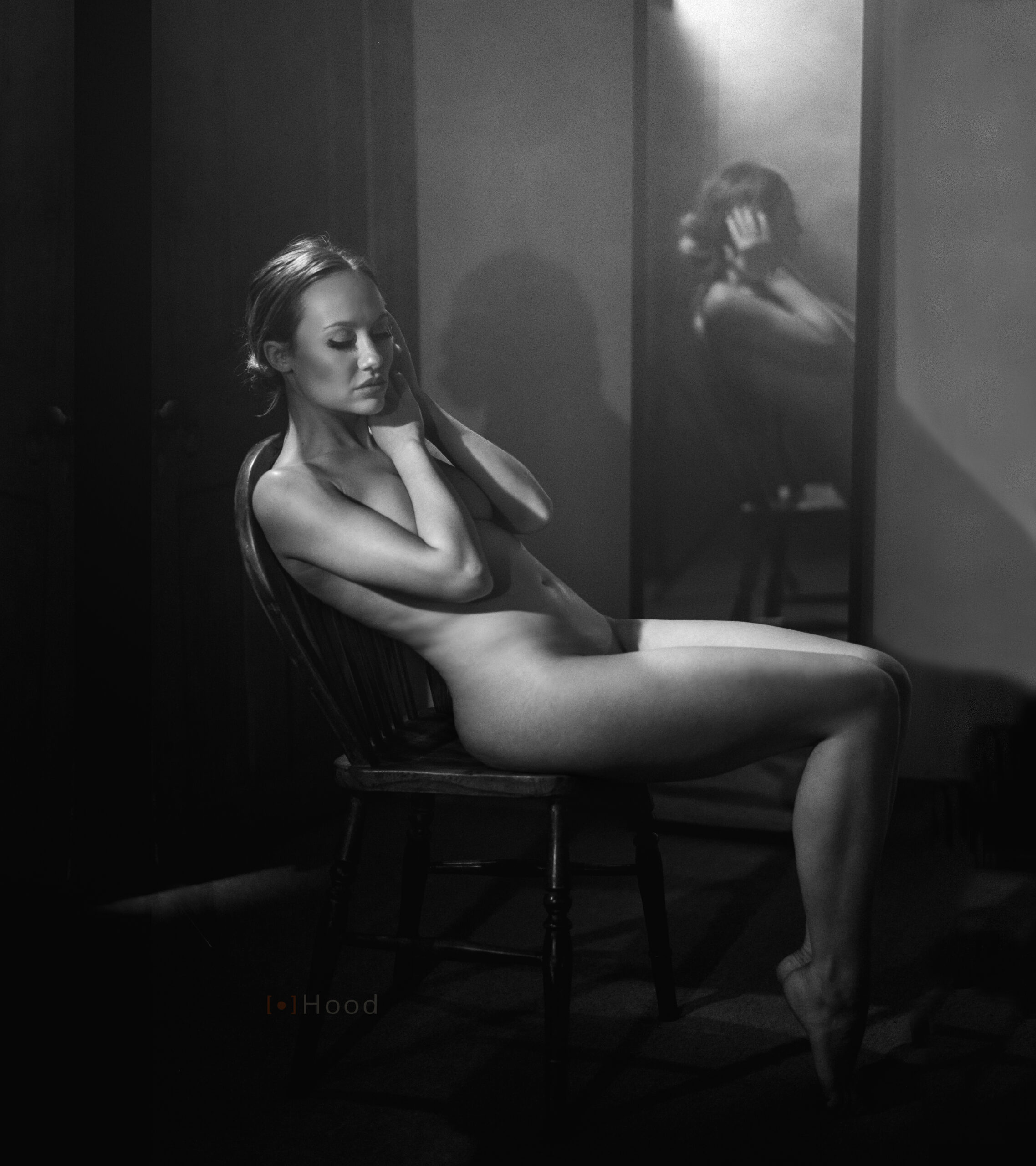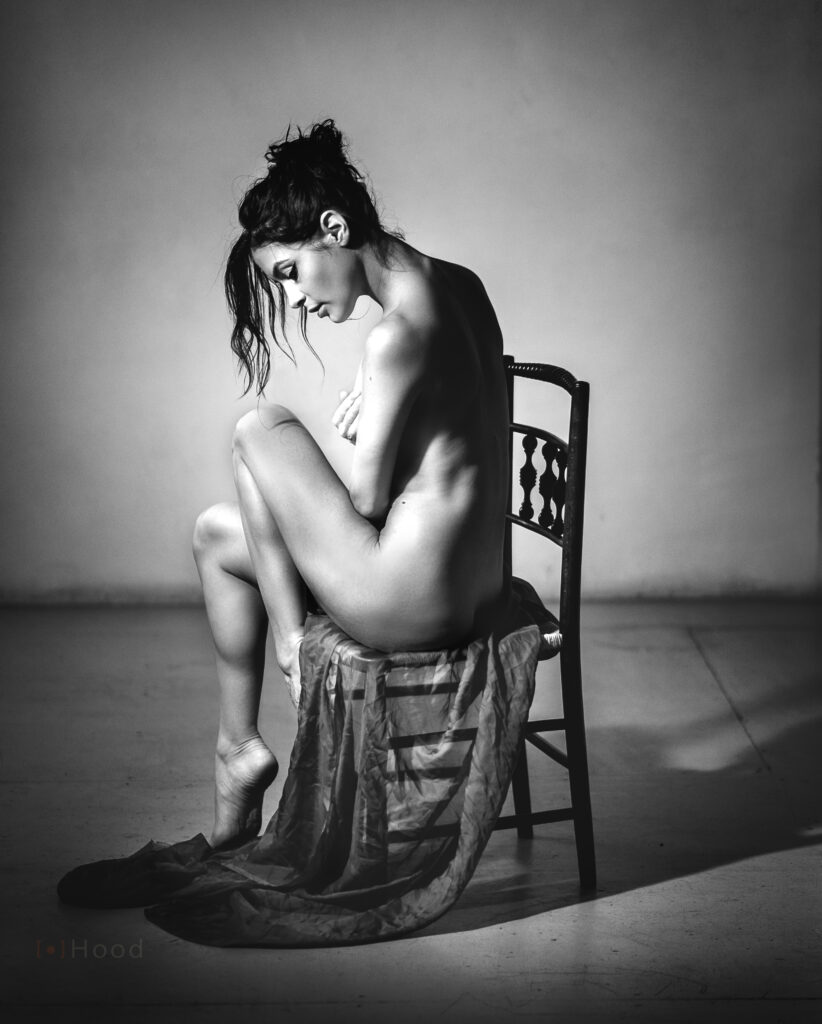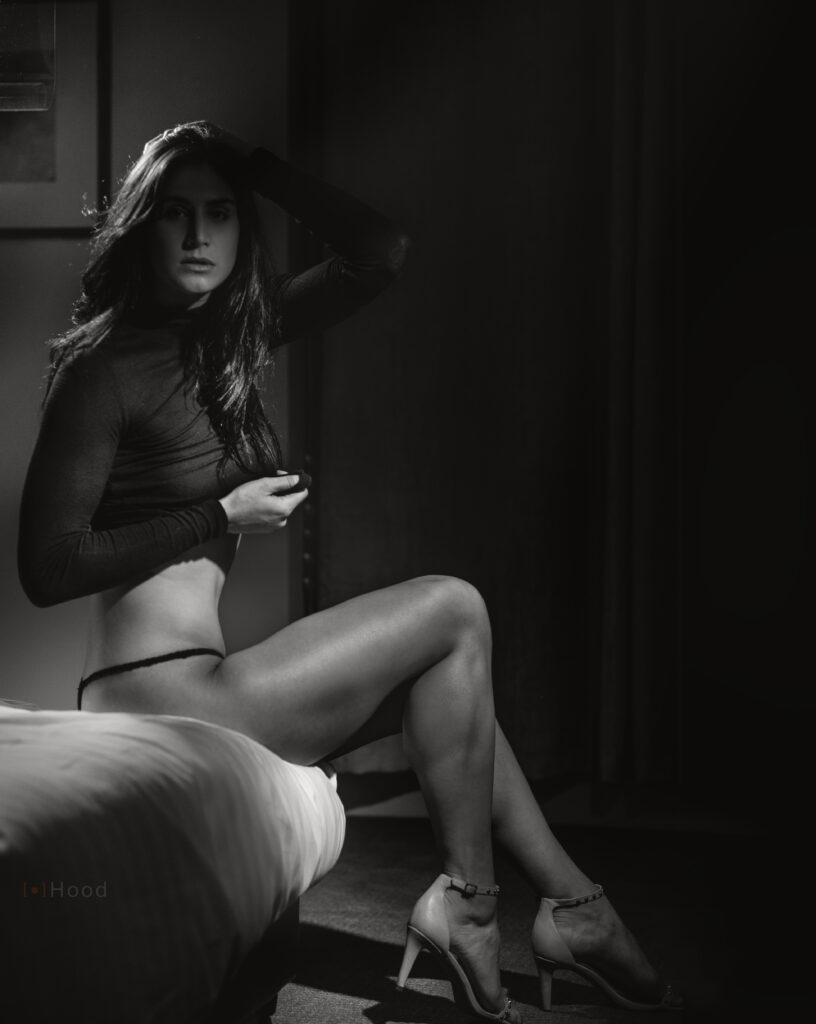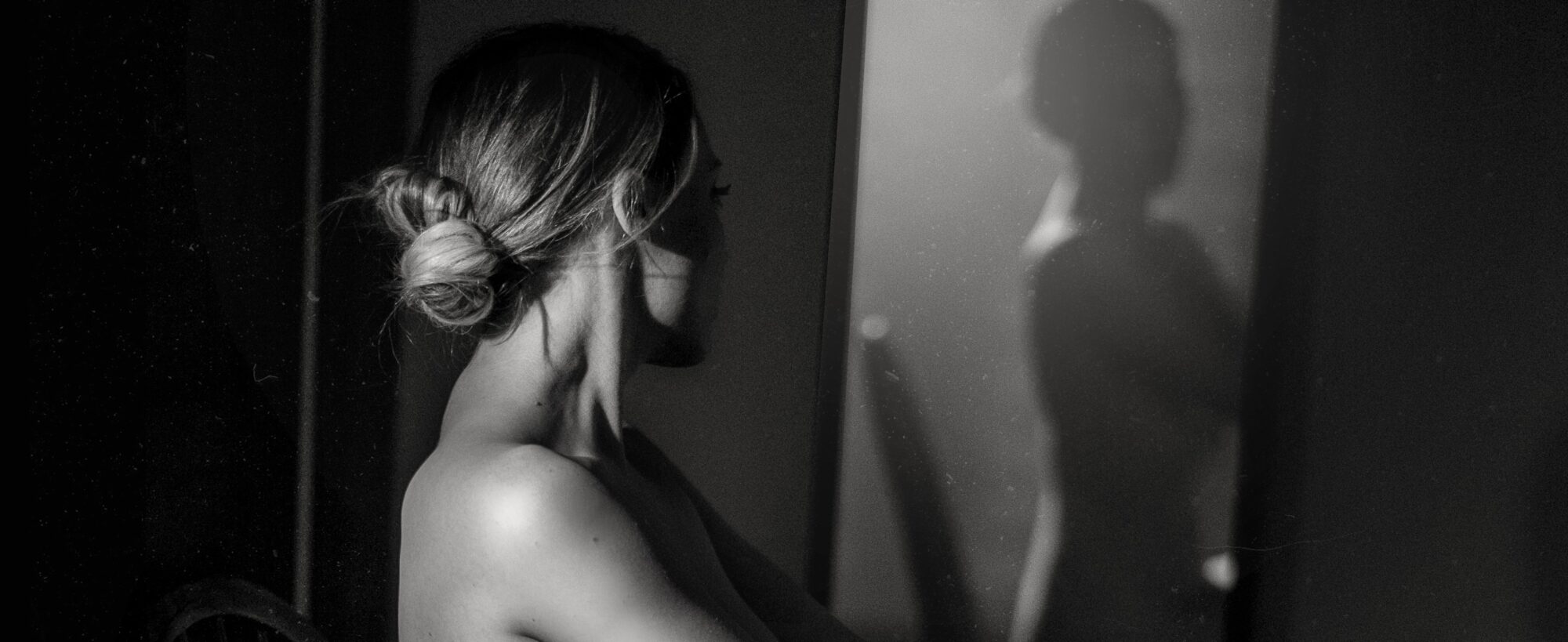Exploring the Art of Shape, Form, and Perspective
Black and white fine art photography is an art form that explores the intricate relationships between light, shadow, shape, and form. It carries the potential to capture the human body in its most natural state, revealing the nuances of form and texture in a way that colour photography often cannot. There is a deep philosophical contemplation of how we perceive and represent the body. In this blog I will explain my ways of seeing. “It is seeing which establishes our place in the surrounding world” – John Berger
Understanding the Essence of Black and White Fine Art



The absence of colour in black and white photography, strips an image down to its fundamental elements: light and shadow, line and shape, texture and form. This simplification directs the viewer’s attention to the composition, the play of light across the body, and the emotional tone set by the photographer.
Without the distraction of colour, the human form becomes a canvas for artistic expression, capturing subtle gradations in tone that speak to the intimacy and vulnerability of the subject.
Lighting Techniques for Shape and Form
1. The Importance of Directional Lighting
Directional lighting is crucial in black and white nude photography. It accentuates the contours of the body, creating a dramatic interplay between light and shadow that emphasizes the three-dimensional form. By placing the light source at various angles relative to the model, you can sculpt the body with light, highlighting musculature, curves, and textures.
- Side Lighting: Positioning the light to the side of the subject enhances depth and dimension by creating strong shadows that define the body’s contours. This technique is particularly effective for emphasizing the curvature and muscle definition.
- Backlighting: When the light source is placed behind the subject, it creates a rim of light around the edges of the body, separating the subject from the background and highlighting the silhouette. This approach can be used to create a sense of mystery and elegance.
- Top Lighting: Lighting the subject from above can accentuate the body’s natural lines and shadows, highlighting features such as the shoulders, collarbones, and abdominal muscles.
2. Soft vs. Hard Lighting
The choice between soft and hard lighting greatly affects the mood and message of a photograph.
- Soft Lighting: This type of lighting, often achieved with diffusers or natural light through windows, produces gentle transitions between light and shadow. It creates a more romantic, ethereal look, softening imperfections and providing a flattering glow to the skin.
- Hard Lighting: Produced by direct, un-diffused light sources, hard lighting generates sharp contrasts and well-defined shadows. This approach can be used to create a more intense, powerful look, emphasizing strength and structure.
Shadows: The Partner of Light

Shadows play a pivotal role in black and white photography. They add depth and texture, enhancing the visual interest of the image. By controlling the intensity and placement of shadows, photographers can create a sense of mystery or highlight specific features of the body. Shadows can also help to conceal certain areas, allowing the viewer’s imagination to fill in the gaps.
Other Elements Of The Fine Art Portrait
1. The Power of Context
The context in which an image is viewed affects its interpretation. In nude photography, the context includes the setting, the pose, and the lighting, all of which can influence how the image is perceived. Use these elements to guide the viewer’s interpretation, either by reinforcing traditional views of beauty and sensuality or by challenging them.
2. The Role of the Gaze
The way the model interacts with the camera can create a sense of intimacy or distance, vulnerability or strength.
- Direct Gaze: When the model looks directly at the camera, it creates a connection with the viewer, evoking a sense of intimacy or confrontation.
- Averted Gaze: If the model looks away, it can suggest introspection, mystery, or detachment, allowing the viewer to observe without being observed in return.
3. The Female Nude
There have been discussions of the female nude in art history highlighting the objectification and idealization often present in representations of the female body. Create images that celebrate the body without reducing it to an object. By focusing on the individuality and strength of the model, rather than conforming to idealized standards, you can create empowering images.
Posing with Elegance, Grace, and Sensuality

The pose is a crucial element in black and white nude photography, as it communicates the model’s mood and the overall message of the photograph.
1. Elegance and Grace
Elegance in posing is achieved through the thoughtful arrangement of the body’s lines and angles. Graceful poses often involve fluid, curved lines that enhance the natural form of the body.
- Curves and Arcs: Poses that emphasize the body’s natural curves, such as arched backs or flowing arms, can create a sense of movement and harmony.
- Balanced Poses: Ensuring that the model’s weight is distributed evenly can create a sense of poise and stability.
2. Sensuality
Sensuality in posing is about conveying emotion and connection, rather than simply displaying the body. It involves subtlety and suggestion, often achieved through the model’s expression and body language.
- Expression: A thoughtful gaze can add depth to a pose, suggesting inner thoughts or feelings.
- Body Language: The positioning of the hands and legs, the tilt of the head, or the angle of the shoulders can all convey different emotions and levels of intimacy.
The Narrative of the Photograph
A powerful photograph tells a story. In black and white nude photography, this narrative can be enhanced through careful consideration of the elements within the frame.
1. The Setting
The setting of the photograph can provide context and depth to the narrative.
A minimalist backdrop can focus attention on the model, while a more complex setting can add layers of meaning.
2. Props and Accessories
Props and accessories should be used sparingly and with intention. They should complement the model and the narrative, not distract from them.
Conclusion
Black and white fine art photography is a deeply expressive and challenging art form. Explore the complexities of perception and representation, crafting portraits that celebrate the human form in all its beauty and diversity. As you embark on your journey, remember that every element in your frame is a part of the story you are telling—make it a story worth seeing.
Further reading
If you would like to delve deeper into the psychology of fine art, I recommend a book that I read at art college. The Ways Of Seeing by John Berger. The book challenges traditional art criticism by examining the ways in which visual representations, especially in Western art, influence our understanding of reality, power, and gender. Berger delves into the politics of how we see and interpret images, revealing the underlying social and ideological constructs that shape our perceptions. This work invites readers to question the assumptions behind visual culture and offers a new perspective on the relationship between art and society.
We are a participant in Amazon Services LLC Associates Program, an affiliate advertising program.
When you click on and/or make a purchase through a link to an Amazon affiliate link placed on this
website, we may receive a small commission at no additional cost to you.
Ways Of Seeing By John Berger (Amazon UK)
Ways Of Seeing – By John Berger (Amazon US)


Love the information you have provided.
Thank you for the tips 😊